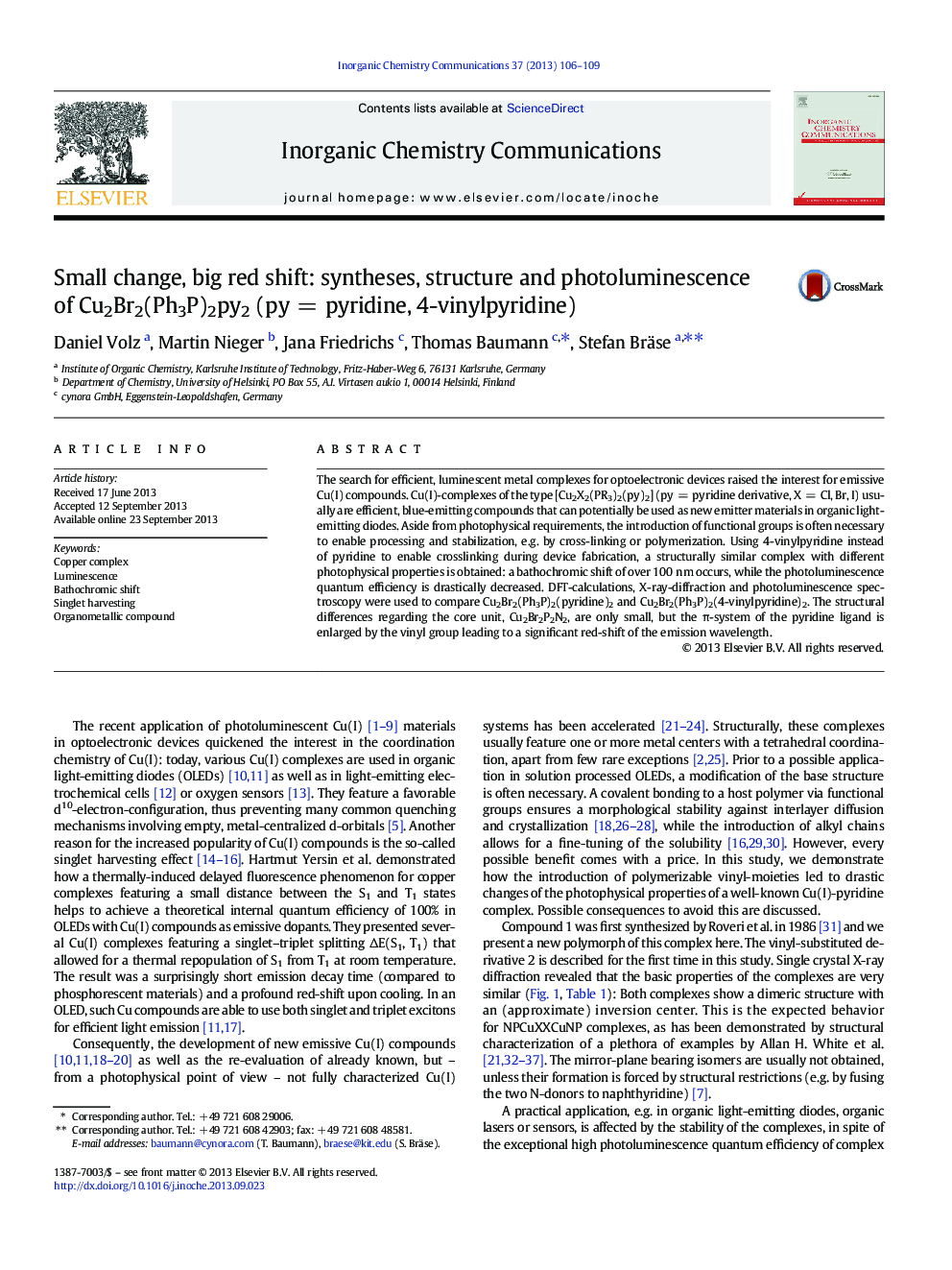| کد مقاله | کد نشریه | سال انتشار | مقاله انگلیسی | نسخه تمام متن |
|---|---|---|---|---|
| 1301860 | 1498953 | 2013 | 4 صفحه PDF | دانلود رایگان |

• Cu(I)-complexes of the type [Cu2X2(PR3)2(pyridine)2] are usually efficient blue emitters.
• Using 4-vinylpyridine instead, the photophysical properties change drastically.
• While the PLQY is substantially lower, the emission is red-shifted.
• The reason for this was found to be an extension of the LUMO, which opens up new quenching paths.
The search for efficient, luminescent metal complexes for optoelectronic devices raised the interest for emissive Cu(I) compounds. Cu(I)-complexes of the type [Cu2X2(PR3)2(py)2] (py = pyridine derivative, X = Cl, Br, I) usually are efficient, blue-emitting compounds that can potentially be used as new emitter materials in organic light-emitting diodes. Aside from photophysical requirements, the introduction of functional groups is often necessary to enable processing and stabilization, e.g. by cross-linking or polymerization. Using 4-vinylpyridine instead of pyridine to enable crosslinking during device fabrication, a structurally similar complex with different photophysical properties is obtained: a bathochromic shift of over 100 nm occurs, while the photoluminescence quantum efficiency is drastically decreased. DFT-calculations, X-ray-diffraction and photoluminescence spectroscopy were used to compare Cu2Br2(Ph3P)2(pyridine)2 and Cu2Br2(Ph3P)2(4-vinylpyridine)2. The structural differences regarding the core unit, Cu2Br2P2N2, are only small, but the π-system of the pyridine ligand is enlarged by the vinyl group leading to a significant red-shift of the emission wavelength.
Cu(I)-complexes of the type [Cu2X2(PR3)2(pyridine)2] are usually efficient blue emitters. Using 4-vinylpyridine instead, the photophysical properties change drastically. While the PLQY is substantially lower, the emission is red-shifted. The reason for this was found to be an extension of the LUMO, which opens up new quenching paths.Figure optionsDownload as PowerPoint slide
Journal: Inorganic Chemistry Communications - Volume 37, November 2013, Pages 106–109